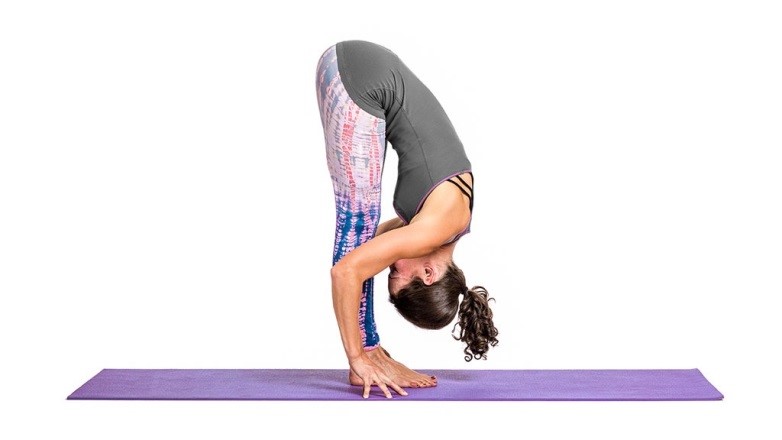Introduction
In recent years, yoga has encountered an upsurge in prominence in the western world among clinical experts and celebrities at the same time. While many people link yoga with new age otherworldliness or the most recent prevailing fashion at the rec center, yoga is an antiquated practice that connects your brain, body, and soul through body postures, controlled breathing, and contemplation.
Others, including mental clearness and stress decrease, can be more inconspicuous however are similarly as incredible. Gotten from the Sanskrit word ‘Yuj,’ which signifies ‘to join,’ yoga is a mix of mental, physical, and profound practices that, when woven together, convey an intense portion of prosperity.
Types of yoga
There are numerous kinds of yoga. Hatha (a mix of multiple styles) is quite possibly the most mainstream style. It is a more actual kind of yoga instead of a still, meditative kind. Hatha yoga centers in pranayamas (breath-controlled activities). These are trailed by a progression of asanas (yoga poses), which end with savasana (a resting period). The objective during yoga practice is to challenge you genuinely, yet not to feel overpowered. At this “edge,” the emphasis is on your breath while your mind is tolerating and quiet.
12 ways yoga can improve your health
1. Enhances your flexibility
Enhanced flexibility is one of the first and most apparent advantages of yoga. During your first session, you presumably will not be able to contact your toes, and it’s better not to do a backbend. In any case, on the off chance that you stay with it, you’ll notice a steady relaxing, and ultimately, apparently peculiar postures will get conceivable. You’ll likewise presumably see that a throbbing painfulness begins to vanish. That is no coincidence. Tight hips can strain the knee joint because of the ill-advised arrangement of the thigh and shinbones. Tight hamstrings can prompt a straightening of the lumbar spine, which can cause pain in your back. Furthermore, rigidity in muscles and connective tissue, like ligaments and fascia, can cause a bad posture.
2. Better body image
Yoga creates inward mindfulness. It concentrates on your body’s capacities at the current moment. It makes breath and strength of psyche and body. It’s not about actual appearance.
Yoga studios usually don’t have mirrors. This is so individuals can center their mindfulness internally instead of how a posture or individuals around them looks. Surveys have tracked down that the individuals who rehearsed yoga were more mindful of their bodies than individuals who didn’t rehearse yoga. They were likewise happier with and less reproachful of their bodies. Therefore, yoga has played a fundamental part in treating dietary problems and projects that advance positive self-perception and confidence.
3. Boosts weight loss and maintenance
Individuals who practice yoga and are careful eaters are more on top of their bodies. They might be more delicate to hunger signals and sensations when they’re full.
According to research, individuals who rehearsed yoga for 30 minutes once every week for at any rate four years put on less weight during center adulthood. Individuals who were overweight shed pounds. In general, the individuals who rehearsed yoga had lower weight records (BMIs) contrasted and the individuals who didn’t rehearse yoga. Researchers credited this to mindfulness. Mindful eating can prompt a more progressive relationship with food and eating.
4. Yoga increases your energy
From a spiritual point of view, day-by-day yoga practice is said to stir the primary energy communities known as chakras in your body. Good poses for additional energy are those that broaden the spine, for example, the tree posture, permitting power to circle all through the entire body, and postures that open the chest, similar to the cobra posture, boosting the admission of more breath.
Scientific examination proposes that yoga can, without a doubt, strengthen your brain. Rehearsing a 25-minute Hatha yoga session can improve your energy levels ‘essentially,’ as per research by the University of Waterloo. This idea to be because of the arrival of endorphins, expanded bloodstream to the mind, and decreased emphasis on meditative contemplations.
5. Improves your posture
Your head resembles a bowling ball—enormous, round, and weighty. At the point when it’s decent straight over an erect spine, it takes substantially less work for your neck and back muscles to help it. Move it a few crawls forward, notwithstanding, and you begin to strain those muscles. Hold up that forward-inclining bowling ball for eight or 12 hours every day, and it’s no big surprise you’re worn out. What’s more, tiredness probably won’t be your solitary issue. Poor poses can cause back, neck, and other muscle and joint problems. As you droop, your body may repay by straightening the ordinary internal bends in your neck and lower back. This can cause torment and degenerative joint pain of the spine.
6. Better breathing
Yogic breathing strategies are known as pranayama, center around hindering the breath and breathing from the pit of your stomach to the highest point of your lungs. Just as making an impression on your mind that calms your thoughtful sensory system – liable for the ‘battle or flight reaction we feel when focused – these activities have been appeared to increment imperative limit, which alludes to the aggregate sum of air your lungs can breathe out.
7. Prevents joint and ligament breakdown
Each time you practice yoga, you take your joints through their full scope of movement. This can help forestall degenerative joint pain or relieve handicap by squeezing and soaking spots of the ligament that ordinarily aren’t utilized. A joint ligament resembles a sponge; it gets new supplements just when its liquid is crushed out, and another stock can be absorbed. Without legitimate food, disregarded spots of the ligament can, in the end, wear out, uncovering the hidden bone-like destroyed brake cushions.
8. Manages depression
While prescription and mental therapies are the proper decisions for treating depression, numerous investigations show that yoga can be a tremendously helpful integral device. In what way? It’s everything down to the stress hormone. Raised cortisol levels decline your body’s capacity to make serotonin, the cheerful chemical (in addition to different synapses like dopamine – the prize and inspiration chemical). Yoga assists with reducing cortisol levels.
9. Increase in blood flow
Yoga gets your blood streaming. All the more explicitly, the unwinding practices you learn in yoga can help your course, particularly in your grasp and feet. Yoga likewise gets more oxygen to your cells, which perform better, therefore. Contorting postures is thought to wring out venous blood from inward organs and permit oxygenated blood to stream once the curve is delivered. Upturned postures, like Headstand, Shoulder stand, and Handstand empower venous blood from the legs and pelvis to stream back to the heart, where it tends to be siphoned to the lungs to be newly oxygenated.
This can help if your legs are swollen from heart or kidney issues. Yoga additionally increases levels of hemoglobin and red platelets, which convey oxygen to the tissues. What’s more, it diminishes the blood by making platelets less wet and cutting the degree of clump advancing proteins in the blood. This can prompt abatement in coronary failures and strokes since blood clusters are regularly the reason for these executioners.
10. Heart benefits
A few minor examinations have discovered yoga to affect cardiovascular danger factors positively: It assisted lower blooding pressure in individuals who have hypertension. Almost certainly, yoga reestablishes “baroreceptor affectability.” This aides the body detects distinctive characteristics in pulse and look after balance.
Another study rehearsed yoga improved lipid profiles in healthy patients, just as patients with known coronary course sickness. It likewise brought down excessive glucose levels in individuals with non-insulin subordinate diabetes and diminished their requirement for meds. Yoga is presently being remembered for some heart recovery programs because of its cardiovascular and stress-calming benefits.
11. Better sleep
One more of the more regular advantages of yoga include a superior night’s sleep. In an investigation by the Swami Vivekananda Yoga Research Foundation, members who rehearsed yoga slept speedier, dozed for more, and felt all the more very much refreshed contrasted with individuals who didn’t. Whenever you’re battling to float off, take a stab at working on loosening up poses, for example, forward fold (uttanasana) or lying on your back with your feet up the wall.
12. Sustains your nervous system
Some high-level yogis can handle their bodies’ extraordinarily, large numbers of which are intervened by the nervous system. Researchers have observed yogis who could actuate strange heart rhythms, create explicit mind wave examples, and, utilizing a contemplation strategy, lift the temperature of their hands by 15 degrees Fahrenheit. On the off chance that they can use yoga to do that, maybe you could figure out how to improve the bloodstream to your pelvis if you’re attempting to get pregnant or incite unwinding when you’re experiencing difficulty nodding off.
Conclusion
Different investigations have affirmed the numerous psychological and physical advantages of yoga. Consolidating it into your routine can help upgrade your wellbeing, increment strength, and adaptability and diminish indications of stress, gloom, and uneasiness. Figuring out how to rehearse yoga only a couple of times each week might be sufficient to have an observable effect on your wellbeing.








